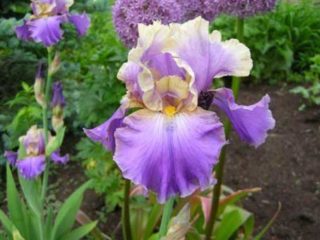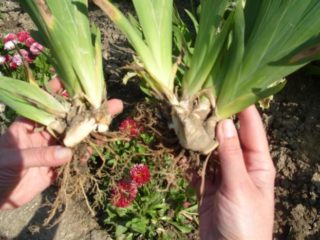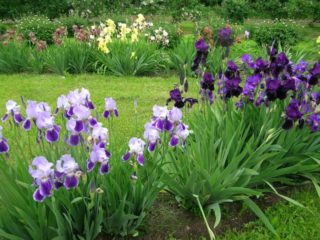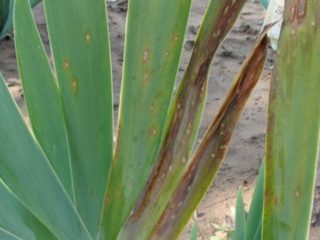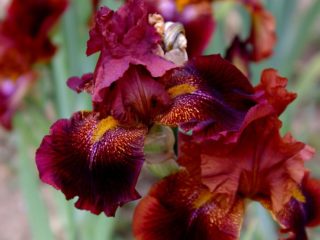Content
Planting and caring for Siberian iris outdoors is so simple that even an inexperienced gardener can handle them. Even a marsh and wild species can envy the refinement, drought resistance, winter hardiness of the culture.
Features of growing Siberian irises
Siberian iris is a material for the work of breeders. More than 800 varieties of the cultivated flower are known that do not have a beard. Its petals are narrow and long, diverging in one plane. Covered from above with small hairs resembling a downy. Color: lilac, blue, white, yellow, as well as a mixture of these paints.
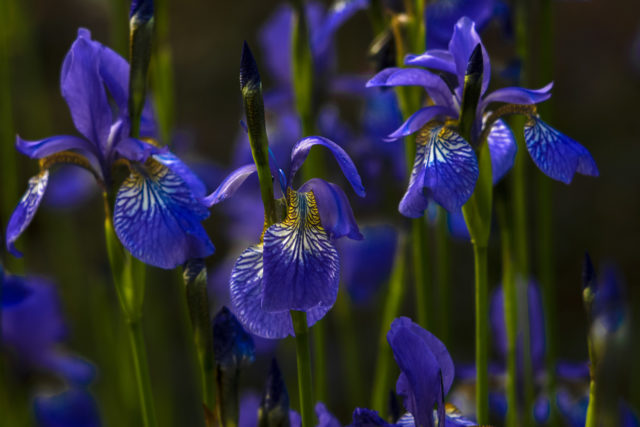
Siberian iris is popularly called "cuckoo's tears"
Siberian iris (Iris Sibirica) is considered the most hardy. It is able to survive in the harsh climatic conditions that Siberia may have. The variety is resistant to diseases and pests. The culture is growing rapidly, but its diversity is amazing.
Another feature of growing Siberian irises is the different flowering period, which is very much appreciated in landscape design. Some varieties bloom in June, while others bloom in July and August. Late are remontant varieties that manage to throw out peduncles twice a season.
An interesting fact is that some types of Siberian iris open their inflorescences with a bouquet, others alternately, due to which the flowering period is extended. There are low, medium and tall specimens.
Irises, planted with a dense bush, look especially impressive. They can be above the foliage, on a level with it, or even lower. The first ones soar in zero gravity, the second ones are beautiful framed by greenery, and the third ones seem to hide among the arrow-shaped tops.
Planting and caring for Siberian iris
Both planting Siberian iris and caring for it will not be difficult. The main thing is to do everything on time and provide him with optimal conditions, which are: moderate humidity, illumination of the site and soil with neutral acidity. There are simple growing rules that will allow iris to reveal its beauty.
Planting dates of Siberian irises
You can plant iris several times per season:
- March to May. It is necessary to plant Siberian iris in the spring after the soil has completely warmed up, when the threat of frost has passed.
- In autumn, from August to September inclusive. It is important to have time with planting before the temperature is low so that the irises take root well.
- Summer: June, July. Iris can also be planted during these months, but it requires special care. Timely watering and feeding will ensure rapid growth and successful development.
Rhizomes planted in spring and summer do not require winter shelter, and autumn seedlings should be slightly covered so that young delenki do not die from severe frosts. This procedure can be omitted for the next year.
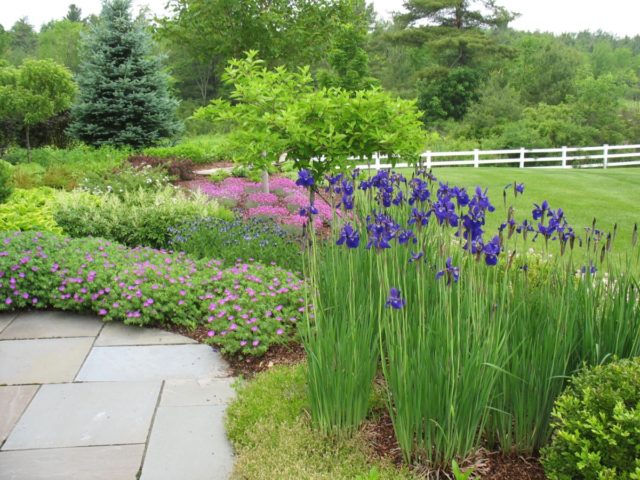
Siberian iris loves space, an abundance of light, while it does not bend from strong winds, therefore it does not require the installation of supports
Site selection and soil preparation
Siberian iris is very sensitive to light, especially when cultivated in the middle and northern lane, so gardeners are advised to plant the plant in well-lit, warm areas. In the southern territories, flowers need places where partial shade will fall on them at noon.
Irises feel great near groundwater. Sometimes lilac flower beds can frame the shores of artificial reservoirs, while the root system does not suffer, which cannot be said about the elite of bearded irises.
How to plant Siberian iris
Having decided on the place and time of planting the iris, they begin to prepare the soil. Light loams with high fertility are an excellent option. If the soil layer is depleted, it is necessary to add black soil or compost, dig up and make holes. The following landing steps:
- The pits should be slightly larger than the root of the Siberian iris seedling so that they do not have to be bent when planting.
- Usually, the planting layer of the rhizome in the ground is located horizontally, therefore, it is also placed in the hole. In no case should it be placed vertically. It is buried in the soil by 7 cm, then sprinkled with earth. A distance of 60 cm is maintained between adjacent iris seedlings.
- The earth around the Siberian iris is tamped and watered well so that there are no air spaces left inside.
- To retain moisture in the ground, a layer of mulch (5 cm) is poured in the form of peat or mowed and chopped grass.
The iris planting material must meet certain requirements: foliage shortened to 1/3, rhizome segments no more than 12 cm.
Follow-up care
The rhizome of the Siberian Iris is significantly different from the bearded irises. It practically creeps along the surface of the flower bed, which makes it difficult to weed and loosen it. Therefore, the main methods of care remain: feeding, watering and determining for the winter.
Watering and feeding
To get the maximum flower stalks, irises require timely feeding. The procedure is carried out twice a season:
- the first time - in early spring, after the snow has melted;
- the second - before or after flowering.
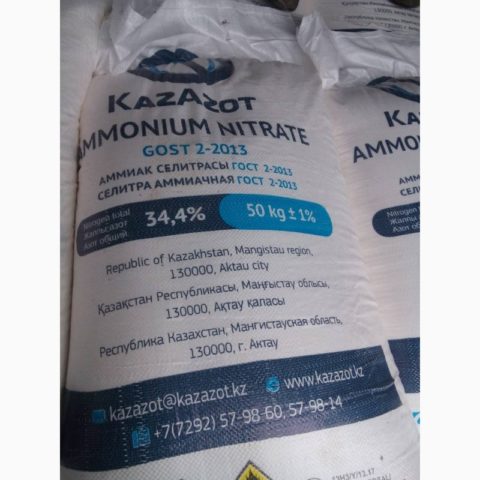
Ammonium and potassium nitrate are perfect as mineral fertilizers for irises.
To maintain soil fertility, mulch should always be present on the surface of the trunk circle. It not only retains moisture, but also nourishes the soil, provides coolness in the hot season.
Water the irises as the earthen coma dries up. The plant tolerates drought well. Watering is necessary once every 2-3 weeks, but with plenty of water. During the flowering of irises, irrigation is increased, do it once a week. Siberian irises are also responsive to overhead irrigation, especially in the morning.
Siberian iris wintering
The moment of preparation of Siberian iris for wintering is very important. Foliage pruning is carried out with the onset of the first cold weather. At this time, the process of laying flower buds ends, and the foliage stops developing. Cut the leaves so that 10-15 cm stumps remain. A layer of mulch is poured on top of the rhizome so that the exposed areas do not suffer from the bright winter sun.
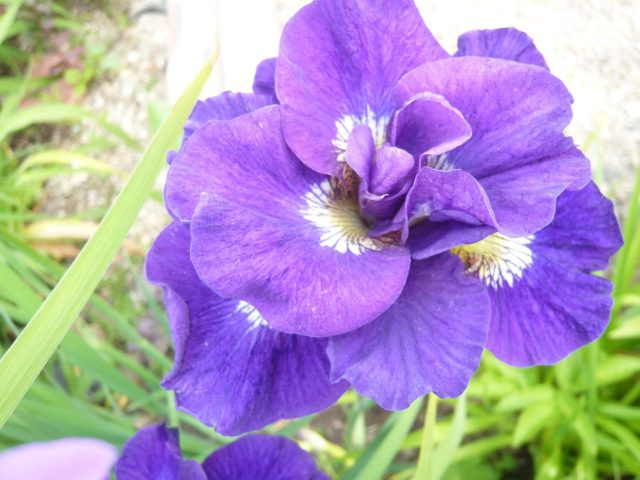
More than 800 varieties of Siberian iris have been bred, differing in flower structure and color
The need for transplanting Siberian irises
A transplant is necessary in the fifth year of iris growth. By this time, in the center of the bush, the rhizome dries up, only the extreme shoots remain.
When and how to transplant Siberian iris
It is better to start transplanting in the fall, after the flowering of Siberian iris. By this time, young roots and annual growths are formed, which can take root well before the onset of frost.
Transplant procedure:
- Siberian iris rhizome is carefully dug out of the ground.
- To determine future delenki, the roots are rinsed from a hose, removing soil residues.
- The iris foliage is cut off, leaving 15 cm stalks.
- If the rhizomes are separated by long sections, they are shortened with a sharp knife.
- Prepared bushes are transplanted to a new location.
When cutting seedlings, the foliage should resemble a fan, which will serve as a means of feeding Siberian iris until wintering.
Reproduction of Siberian irises
Reproduction of Siberian iris is possible by separating independent segments from the rhizome or by dividing the bush and seeds. The second method is more laborious and less frequently used.
Dividing the bush
The breeding time for Siberian iris varieties can be autumn or spring. The period is chosen depending on the climatic conditions of the region. In early winter, the procedure is performed in the spring, and in areas with a late cold snap, iris can be propagated a couple of months after flowering.
Before dividing the iris bush, the foliage is cut off, leaving the lower part. Further, the root is divided in such a way that 2-3 growth nodes are present on each division. The root incisions are made with a sharp knife.
The cut material is kept in a dark place for a week to heal the wounds, and before planting it is soaked in water so that the roots swell slightly.
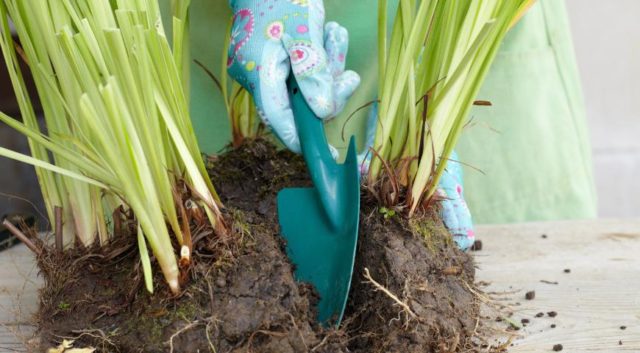
Dividing a bush is the most effective way to reproduce
Growing Siberian iris from seeds
Many gardeners grow irises from seeds. There is no increased complexity, but it will take time for a young plant to start blooming. Reproduction algorithm:
- The seed box is wrapped with gauze so that after ripening the seeds do not fall to the ground.
- Planting material is sown on the garden bed. Embedding depth - 2 cm.
- The ground is covered with insulation (agrofibre, synthetic winterizer, isospan, etc.) so that in winter and spring young seedlings do not die from frost.
- With the onset of spring, the shelter is removed.
You can sow iris seeds at home, but for this they must be stratified. They are wrapped in cheesecloth, packed in a plastic container and placed in the refrigerator. Sowing starts in February. Sowed in individual pots. Future sprouts are provided with warmth and light. Siberian iris is best planted in spring, it is right to do it when it gets warm outside.
Pests and diseases
Diseases often arise from improper care. The most common diseases of Siberian iris are:
- Alternaria... Symptoms include blackheads or spots on the foliage. The greens weaken and dry out. With a profuse lesion, the flower is eliminated from the flower bed. At the initial stage of development of the fungus, irises are treated with Bordeaux liquid.
- Ascochitosis... A fungal disease that can be recognized by brown spots that resemble burns. The irises are treated with products containing copper. In addition to vegetation, the soil should be sprayed.
- Heterosporia... At high humidity, irises can become covered with white-gray specks. The foliage becomes watery, which indicates a disease. The fungus spreads quickly, so you should treat it with a fungicide and cut off diseased leaves.
- Mosaic... In the presence of white oblong spots, treatment should be started. Treatment is carried out with any insecticide. For preventive purposes, spraying can be performed in the spring.
The root part can also be affected by fungi or viruses (root rot, bacteriosis, fusarium). With a strong defeat, Siberian irises are dug up and destroyed. If the symptoms were detected in the early stages, then various remedies are used: potassium permanganate, copper sulfate, folk remedies, fungicides.
Siberian iris can be a favorite food for some insect pests:
- bot aphid;
- onion mite;
- nematode;
- iris fly;
- thrips;
- scoops.
Destruction is carried out with the help of insecticides: Iskra, Inta-Vir, Aktellik, Decis, etc. From folk remedies, soap solution, infusions of bitter and odorous herbs are suitable.Carrots, garlic, and other herbs that repel insects are planted next to Siberian iris.

Frequent diseases of Siberian iris that occur in the absence of care
Conclusion
Planting and caring for Siberian iris in the open field does not cause any particular difficulties. Severe frosts, winds cannot break the beauty of a flower, but protection from diseases and pests must be provided.

